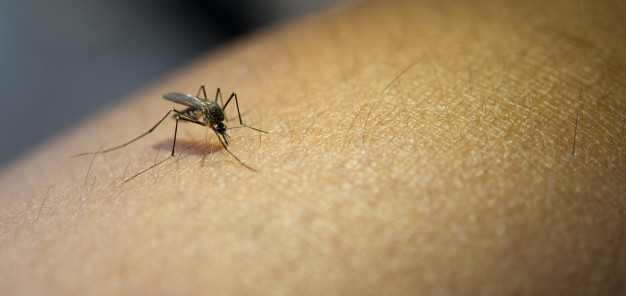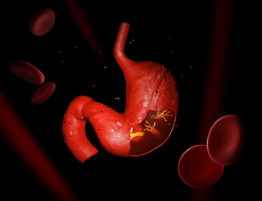
Overview
Malarial parasites belong in the genus Plasmodium, and four species from this genus are known to affect humans in most cases. These include P. falciparum, P. vivax, P. ovale, and P. malariae. The most fatal of these is P. falciparum, and P. Vivax is the most common. They cause the illness by using humans as their intermediate hosts and mosquitos, specifically the female Anopheles, as their vector. The parasite carries out its life cycle by using the two organisms. It begins in the salivary glands of mosquitos, that’s where the sporozoites are found. The mosquito injects the parasite into its human victim while it feeds on their blood. Soon after, the parasite establishes itself in the liver of the human and then begins to grow and multiply in his or her red blood cells. It is from this stage that the Anopheles pick up the parasite in the human’s blood and then carries it to the next victim, acting as a vector. Malaria can also be transmitted by blood transfusion, transplacentally, and increasingly between drug addicts who use improperly cleaned syringes. Throughout this, the parasites do not affect the mosquito.
In 1996, when my mom became pregnant, the malaria in her body resurfaced when the pregnancy became stressful even though she was not showing symptoms at first. This is because certain plasmodium species, such as vivax or ovale, go through an exoerythrocytic stage, which is when the parasite takes time to develop inside liver parenchyma cells before invading erythrocytes. So before the pregnancy, she had lived in Pakistan and previously been afflicted with malaria, but the doctor had only treated the clinical infection and not the dormant strain that was still in her liver. The doctors most likely had only treated the clinical infection with the 4-Aminoquinoline, chloroquine. Primaquine, an 8-aminoquinoline, was essential in eliminating the exoerythrocytic cycle and the combination was effective in the radical cure. The stress of the pregnancy caused the parasite to become active again. Her clinical presentation included hot and cool sensations but her temperature was constantly high (malarial paroxysm). She was anemic and also thrombocytopenic (decline in platelets). But thankfully, the doctors figured out what was happening before anybody was harmed. America has nearly eradicated malaria, but cases such as me and my mom can still occur and malaria still poses a threat to many areas of the world, especially underdeveloped places in Asia and Africa, therefore it is still very important to have knowledge of this disease, which means one should have an understanding of the biology of malaria and an understanding of the history of malaria and its current impact on the world.
The history of malaria stretches back into the depths of history. The word malaria derives from “mal’aria”, Italian for “bad air”. Mentions of the disease or something with similar symptoms can be found even in medical writing from Ancient China. From then on other ancient civilizations, such as Greece, Rome, and India took note of this, at the time, devastating ailment. However, the discovery of the parasite that causes these symptoms did not occur until 1880. In this year, in Constantine, Algeria, a French army surgeon, Charles Louis Alphonse Laveran, noticed the parasite while stationed. In the next two decades, scientists made many more discoveries about the disease. They began to distinguish among the different species, due in part to the work of Camillo Golgi, an Italian neurophysiologist and began to name those that affected humans. Next, Ronald Ross, who served as a British officer in the Indian Medical Service, proved that mosquitoes were the vectors. After the discovery of antimalarials such as aminoquinolines (which include chloroquine and primaquine) in the 1930s and 1940s, the primary focus has been to eradicate malaria.
The battle against malaria is an ongoing one. Worldwide, according to the Centers for Disease Control and Prevention, “3.2 billion people live in areas at risk of malaria transmission in 106 countries and territories. The World Health Organization estimates that in 2015 malaria caused 212 million clinical episodes, and 429,000 deaths.” However, many treatments and preventions stand ready to help. These include vector control with tactics such as mosquito nets and sprays, antimalarial drugs, and chemoprophylaxis. The most common and effective of these is vector control, but in some cases the mosquitoes develop insecticide resistance, a troublingly common trend today. However, organizations such as the World Health Organization are at the forefront of efforts to prevent and fend against malaria and its symptoms, which means new tools and strategies must be used so that we can evolve as well and stay one step ahead of the challenges malaria poses for the world.
Works Cited
“The History of Malaria, an Ancient Disease.” Centers for Disease Control and Prevention. Centers for Disease Control and Prevention, 11 Mar. 2016. Web. 02 June 2017.
“Fact Sheet about Malaria.” World Health Organization. World Health Organization, n.d. Web. 02 June 2017.
“Malaria Parasite, Mosquito, and Human Host.” National Institute of Allergy and Infectious Diseases. U.S. Department of Health and Human Services, 02 June 2017. Web. 02 June 2017.
“Kumar, Parveen J., and Michael L. Clark. Clinical medicine: a textbook for medical students and doctors. London: W.B. Saunders, 2002. Print.”
-
Awesome https://is.gd/tpjNyL
-
Awesome https://lc.cx/xjXBQT
-
Very good https://lc.cx/xjXBQT
-
Awesome https://is.gd/N1ikS2

